The Archer Fish, known scientifically as Toxotes Jaculator, is a marvel of aquatic life, famed for its unique predatory skill. These intriguing creatures have mastered the art of shooting down unsuspecting insects with water droplets, exhibiting extraordinary accuracy. This rare ability to calculate the light refraction in the water allows them to hit their prey with pinpoint precision, an example of complex behaviour seldom seen in fish.
Indigenous to the mangrove estuaries of Southeast Asia and Australia, they thrive best in a brackish water environment. Their distinctive appearance, marked by a compressed body and banded pattern, makes them a captivating addition to any aquarium. Equipped with a lifespan of up to 10 years, proper care and a balanced diet can ensure a healthy life for these remarkable fish.
Table of Contents

Stats and details
| Archer Fish Fact | Details |
| Scientific Name: | Toxotes jaculator |
| Care Level: | Moderate to Advanced |
| Native Region: | Mangrove estuaries of Southeast Asia and Australia |
| Lifespan: | Up to 10 years in optimal conditions |
| Size: | Up to 30 centimetres |
| Family: | Toxotidae |
| Diet: | Carnivore |
| Minimum Tank Size: | Tank Size: 150 litres for a small group of fish |
| Compatibility: | A variety of similarly-sized non-aggressive species |
Archer Fish Scientific Classification
The scientific classification of the Archer Fish, or Toxotes Jaculator, places it within a well-structured hierarchy of biological classifications. It belongs to the Animalia kingdom, signifying that it is a multicellular organism that consumes organic material for survival.
As part of the Chordata phylum, the Archer Fish has a notochord, which is a hollow dorsal nerve cord typically seen in vertebrates. Falling under the Actinopterygii class, it is classified as a ray-finned fish, a group that constitutes nearly half of all living vertebrate species. Within the Perciformes order, it is a member of one of the largest orders of fishes.
Finally, it belongs to the Toxotidae family, comprising small tropical marine fishes known for their predatory behaviour. This scientific classification underscores the biological lineage and characteristics of the Archer Fish, enabling us to understand its evolution, anatomy, and behavioural traits better.
Natural habitat
The Archer Fish, native to Southeast Asia and Northern Australia, thrives in brackish waters found in mangrove estuaries and freshwater environments. These regions often feature overhanging vegetation that supports the fish’s unique hunting style.
Water conditions in their habitat usually include a moderate current, pH levels between 7.0 to 8.0, hardness around 5 to 15 dGH, and temperatures between 25 to 30°C. The substrates often consist of sandy or muddy bottoms with occasional rocks or driftwood, while lush vegetation provides crucial hiding spots. Replicating these natural conditions in an aquarium ensures the Archer Fish’s wellbeing.
Physical Characteristics of Archer Fish
Size and Lifespan
Archer Fish, scientifically known as Toxotes Jaculator, is quite an impressive specimen when it comes to its size and lifespan. On average, these fish grow to be about 10 to 12 centimetres in the wild, although some have been known to reach sizes up to 40 centimetres. As for their lifespan, Archer Fish are relatively long-lived in comparison to other fish species.
They typically live up to 5 to 7 years in the wild, but in a well-maintained captive environment with optimal conditions, they can thrive for as long as 10 years. This longer lifespan in captivity is due to the regulated diet, stable water parameters and the absence of predators. Proper care and environment management are key to ensuring the health and longevity of your Archer Fish, enhancing its potential lifespan.
Types of Archerfish: The 9 Different Species
Archerfish, part of the family Toxotidae, are a group of remarkable fish species known for their unique water-spitting hunting technique. Although often collectively referred to as Archerfish, there are actually nine different species within this group, each possessing its own unique traits and characteristics:
- Banded Archerfish (Toxotes jaculatrix): The most well-known of the species, they are recognized by their distinct black bands across their silver bodies.
- Smallscale Archerfish (Toxotes microlepis): Named for their smaller scales, they sport five to six black bands on their bodies.
- Largescale Archerfish (Toxotes chatareus): This species has a similar appearance to the Banded Archerfish, but with larger scales.
- Seven-spot Archerfish (Toxotes lorentzi): Notable for having seven dark spots rather than bands along their silver or gold bodies.
- New Guinea Archerfish (Toxotes kimberleyensis): Endemic to Australia, they are identified by their unique olive-green colour.
- Western Archerfish (Toxotes oligolepis): This species has fewer scales and bands compared to other Archerfish.
- Coastal Archerfish (Toxotes australis): Found primarily in Australia, they are similar in appearance to the Banded Archerfish but with a more elongated body shape.
- Spotfin Archerfish (Toxotes spilodera): Named for the dark spot on their dorsal fin, these fish have fewer bands compared to other species.
- Common Archerfish (Toxotes affinis): Smaller and slightly less banded than their counterparts, they are one of the lesser-known species of Archerfish.
Each species has its own preferred habitat and diet, but all share the same unique water-spitting hunting technique that has made Archerfish so famous.
Archer Fish body bands
The Banded Archer Fish, or Toxotes Jaculator, is most noted for its distinctive body bands, an identifying characteristic of the species. Typically, these bands are dark in colour, ranging from dark grey to black, and contrast vividly against the fish’s silver or pale yellow body.
The number of bands may vary, but usually, an Archer Fish displays four to six bold, vertical stripes that start from the dorsal side and extend towards the belly. These stripes not only add to their aesthetic appeal but also serve a functional purpose. The bands provide a form of disruptive coloration, breaking up the fish’s outline and making it harder for predators to detect.
This form of camouflage plays a crucial role in the survival of the Archer Fish in the wild, contributing to its fascinating natural defence mechanism.
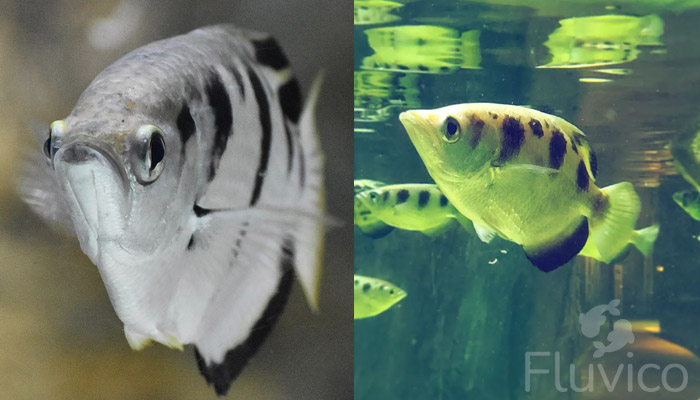
Behaviour and compatibility
Archer Fish exhibit intriguing behaviour and compatibility traits that set them apart in the world of aquatic life.
Behaviour:
Known for their unique hunting mechanism, Archer Fish have the remarkable ability to spit water jets to knock down insects and small animals from overhanging vegetation. This ability to ‘shoot’ their prey demonstrates their keen eyesight and exceptional predatory skills. In the water, they are generally peaceful, active swimmers that can be seen in all areas of the tank. They tend to thrive in a group of 5-6 of their own kind.
Compatibility:
When it comes to their compatibility with other species, Archer Fish are relatively peaceful, making them suitable for community tanks. However, given their carnivorous nature, they may prey on smaller fish or invertebrates, so it’s advised to house them with larger, non-aggressive species. Tank mates such as Monos, Scats, Mudskipper Gobies, and Fiddler Crabs can often be seen living harmoniously with Archer Fish. Additionally, they’re known to be quite adaptable to different water conditions and are fairly resilient against many common fish diseases.
However, like all fish, they thrive best when provided with a suitable environment, proper diet, and care. Always remember that every individual fish may have its unique traits, so compatibility can sometimes vary.
Family Life and Young
The family life and rearing of young for the Archer Fish are intriguing aspects of their overall life cycle. Archer Fish are solitary hunters, but they are often found in groups in the wild. They aren’t particularly territorial and tend to coexist peacefully with other members of their species. Despite this sociability, there isn’t a highly structured social order among them.
As for their reproduction, Archer Fish are egg scatterers, meaning they release their eggs into the water to be fertilised. Once the male fertilises the eggs, there is no further parental care. The eggs are left to float in the water or attach to vegetation, where they will eventually hatch into fry.
The young, or fry, are left to fend for themselves from the moment they hatch. They start their lives feeding on tiny organisms like zooplankton, gradually moving on to larger prey as they grow. Over time, they will also learn and master the art of water spitting to hunt their prey, a crucial skill in their survival and a fascinating aspect of their behaviour. Like most fish, the survival rate of the young is relatively low due to predation and the lack of parental care. However, those that do survive grow quickly and are soon able to join the adults.
Archerfish Conservation
Conservation of Archerfish species is a noteworthy concern given their unique role in the ecosystem and their captivating hunting technique. Currently, most Archerfish species are not listed as threatened or endangered according to the IUCN Red List, indicating a stable population in their natural habitats.
They are widely distributed in brackish waters and freshwater environments across Southeast Asia and Northern Australia. However, the health and population of Archerfish are affected by the overall condition of their habitats. Deforestation, water pollution, climate change, and human activities can lead to a degradation in the quality of their environments and, consequently, impact their survival.
Preserving the mangrove ecosystems, where many Archerfish species reside, is crucial not only for these unique fish but also for the myriad of other species that rely on these habitats for survival. Conservation efforts should focus on maintaining clean, healthy waters, promoting sustainable fishing, and protecting mangrove forests from deforestation.
Archerfish’s unusual and entertaining hunting behaviour also makes them popular in the aquarium trade. Ensuring sustainable and humane practices in this industry is another important aspect of their conservation. Thus, awareness about Archerfish and education on their proper care can further aid in the conservation of these fascinating creatures.
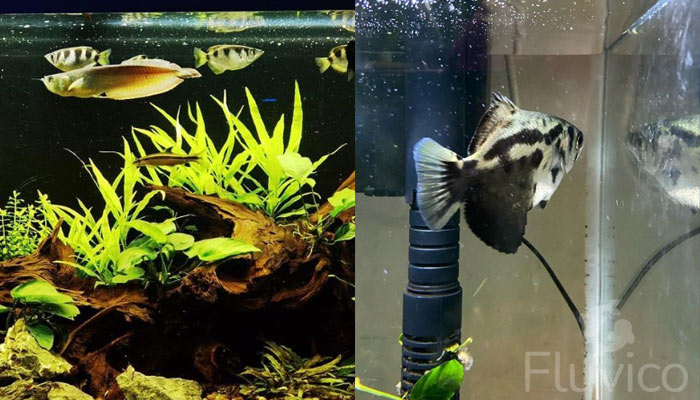
Tank Setup
The Paludarium
A paludarium is a specialised type of aquarium setup that incorporates both terrestrial and aquatic elements in one enclosure, effectively replicating environments such as riverbanks, mangroves, or rainforests. It provides a unique environment where aquatic and terrestrial or semi-aquatic species can thrive together. When setting up a paludarium for Archer Fish, consider the following aspects:
- Water and Land Areas: Depending on the specific needs of the Archer Fish and any other inhabitants, allocate the space between water and land. Archer Fish require a substantial amount of water space, so plan for a deeper water area.
- Substrate: Use a substrate that can support the aquatic and terrestrial life in your paludarium. Sand or fine gravel works well for the water areas, while soil or coconut fibre can be used for the land areas.
- Vegetation: Include both aquatic and terrestrial plants. Aquatic plants can help filter the water and provide cover, while terrestrial plants add to the aesthetics and contribute to the overall ecosystem of the paludarium.
- Lighting and Temperature: Ensure you have appropriate lighting for the plants and a heat source to maintain the temperature required by the Archer Fish and any other inhabitants.
- Filtration and Water Conditions: Archer Fish require clean water with specific pH, hardness, and temperature. Ensure a suitable filtration system is in place and monitor the water conditions regularly.
By properly setting up and maintaining a paludarium, you can provide a diverse and enriching environment for your Archer Fish and other cohabiting species
Tank size
The recommended tank size for Archer Fish largely depends on their adult size and the number of fish being housed. Given that Archer Fish can grow up to 12 centimetres or more in captivity, they require ample space to swim. For a single Archer Fish, a minimum tank size of 150 litres is suggested. For each additional fish, increase the tank size proportionally, ensuring that each fish has adequate space. Larger tanks also make maintaining stable water parameters easier, contributing to healthier, happier fish. 
Archer Fish Tank Setup up
Creating an ideal environment for Archer Fish involves replicating their natural brackish water habitat:
- Tank Size: A tank that can comfortably house the fish when it reaches its full size is essential. For a single Archer Fish, consider starting with a 150-litre tank.
- Brackish Water: To replicate their natural environment, mix marine salt with freshwater to create brackish water conditions. Maintain the specific gravity between 1.005 and 1.015. A hydrometer is crucial to check the salinity.
- Substrate: Use a sandy or fine gravel substrate similar to their native habitats.
- Decorations: Add rocks, driftwood, and plants to provide hiding spots and familiar elements. Also, ensure plenty of open swimming space.
- Filtration: Employ a high-quality filter for maintaining water cleanliness and oxygenation.
- Heating: Temperature control is vital for Archer Fish’s well-being. The water temperature should be consistently maintained between 25-30 degrees Celsius. Use a reliable aquarium heater, ideally with a thermostat for precise temperature control. Consistent and correct temperature levels help ensure your Archer Fish’s health, as fluctuations can lead to stress and potential disease.
- Lighting: Moderate to bright lighting will not only accentuate the fish’s natural colours but also promote the growth of aquatic plants.
- pH Levels: Maintain the water pH between 7.0 and 8.0, which is ideal for Archer Fish. Regular water testing is necessary to monitor pH, as well as salinity and temperature.
When introducing Archer Fish to a new tank, do so gradually to ensure they acclimatise well. Regularly monitor and adjust tank conditions for optimal health and longevity of your fish.
Compatible plants, decorations and Subtrate
Creating a conducive environment for Archer Fish involves selecting an array of compatible plants and decorations:
Plants:
- Java Fern: This plant is hardy and can adapt to various water conditions, including brackish.
- Anubias: A low-maintenance plant that thrives in different environments.
- Cryptocoryne Species: These are versatile and can grow in different water parameters.
- Vallisneria: A tall, grass-like plant that can provide a backdrop in the tank.
- Amazon Sword: Another larger plant species that can provide good cover.
- Floating Plants: Water lettuce, duckweed, or frogbit mimic the overhanging vegetation of the Archer Fish’s natural habitat.
Decorations:
- Bogwood: Gives a natural aesthetic and serves as a hiding spot. Pre-soak to remove tannins.
- Rocks: Use smooth, river-type rocks to add structure. Ensure they’re stable.
- Driftwood: Offers additional hiding and resting places and contributes to the natural look.
- Ceramic Decorations: Can be used to provide additional hiding spots.
Substrate:
- Soft Sand: Closely mimics the Archer Fish’s natural habitat.
- Fine Gravel: Offers an alternative that also serves as a base for plants and decorations.
While adding plants and decorations, ensure to leave sufficient open spaces for the Archer Fish to swim and hunt freely. The overall goal is to create a balanced ecosystem that caters to the Archer Fish’s needs while offering a visually appealing display.

Archerfish Care
Archerfish Diet and feeding
Archer Fish are known for their unique feeding behaviour, using a stream of water to knock prey into the water in their natural environment. In a home aquarium, it’s crucial to offer them a varied diet that emulates their natural food sources, ensuring they receive the necessary nutrients for health and vitality. Here are some diet considerations for Archer Fish:
- Insects: Live or dried insects such as flies, crickets, and mealworms not only supply essential proteins but also stimulate the Archer Fish’s natural hunting behaviours.
- Aquatic Foods: Shrimp, bloodworms, and small fish are excellent additions to their diet, offering a variety of tastes and textures.
- Pellets and Flakes: High-quality, nutritionally balanced pellets or flakes can supplement their diet. However, these should not form the entirety of their diet and should be complemented with live or fresh foods.
- Feeding Frequency: Archer Fish should be fed 1-2 times daily. Overfeeding should be avoided as it can lead to obesity and degrade water quality.
- Dietary Variety: Offering a variety of foods not only meets their nutritional needs but also keeps the Archer Fish mentally stimulated, mimicking the diverse diet they would encounter in the wild.
Regularly monitor your Archer Fish’s eating habits. Any significant changes can be a sign of health issues. Adjust the amount of food based on what is consumed within a few minutes, and remember, a balanced and varied diet is key to your Archer Fish’s health and longevity.
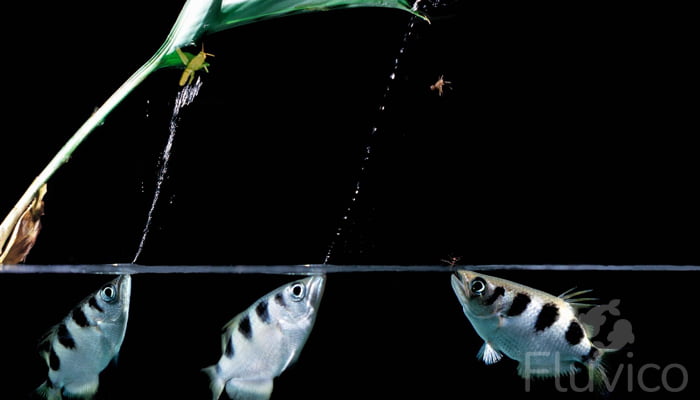
Changing the Water
Regular water changes are an essential part of maintaining a healthy aquarium environment for your Archer Fish. Due to their preference for brackish water, you’ll need to ensure that salinity and water conditions remain stable during water changes. Here’s a guideline for changing the water:
- Frequency: Conduct a partial water change of 10-20% every week. Regular, smaller water changes are better than less frequent, larger ones as they cause less stress to your fish and help maintain stable water parameters.
- Testing: Before and after changing the water, test the water parameters such as pH, temperature, and salinity to ensure they’re within the optimal range for Archer Fish. The ideal pH is between 7.0 and 8.0, the temperature should be 25-30 degrees Celsius, and the specific gravity for salinity should be between 1.005 and 1.015.
- Replacement Water: Use a quality marine mix to achieve the desired salinity in the replacement water. Make sure to match the temperature and pH of the new water to the tank water to avoid shocking the fish.
- Siphoning: Use a siphon to remove debris from the substrate during the water change. This prevents the build-up of waste materials that can deteriorate water quality.
- Tank Cleaning: While changing the water, it’s a good opportunity to clean the tank’s interior surfaces using an algae scraper or pad.
Remember, regular water changes, combined with water testing, ensure that your Archer Fish have a clean and healthy environment, free from harmful substances and suitable for their well-being.
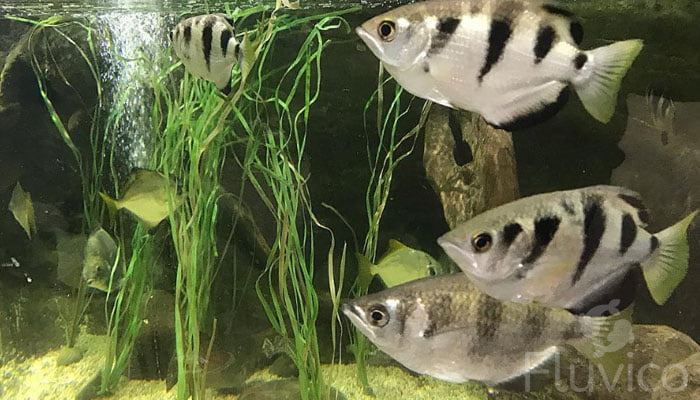
Disease
Just like any other species of fish, Archer Fish are susceptible to various diseases, particularly when kept in suboptimal conditions. Recognising the symptoms early and taking appropriate action can help maintain the health of your fish. Here are some common diseases that Archer Fish might encounter:
- Ich (Ichthyophthirius multifiliis): This is a common disease also known as white spot disease. Symptoms include small white spots on the body, gills, and fins, loss of appetite, and unusual swimming patterns. To treat Ich, increase the tank temperature gradually to 30°C (86°F) for a few days and consider using an over-the-counter treatment.
- Fin Rot: This disease, often caused by poor water quality, causes the fins to look frayed, torn, or discoloured. It can be treated with over-the-counter medication and by improving water quality.
- Fungal Infections: Fuzzy white or grey patches on the skin or fins indicate a fungal infection. Treatment involves using antifungal medications and improving overall water conditions.
- Skin Flukes and Gill Flukes: These are small parasites that attach to the fish’s skin or gills, causing irritation. Symptoms include scratching against objects, rapid gill movement, and mucus patches. They can be treated with specific anti-parasitic treatments.
- Dropsy: This is often a symptom of a bacterial infection causing bloating and raised scales, giving the fish a pinecone-like appearance. Unfortunately, Dropsy is usually a sign of organ failure and is very difficult to treat successfully.
Maintaining high water quality, ensuring good nutrition, and avoiding stress are the best preventive measures against these diseases. If you observe signs of disease, isolate the affected fish in a quarantine tank if possible, to prevent the disease from spreading. Always seek advice from a fish health professional when dealing with serious illnesses. 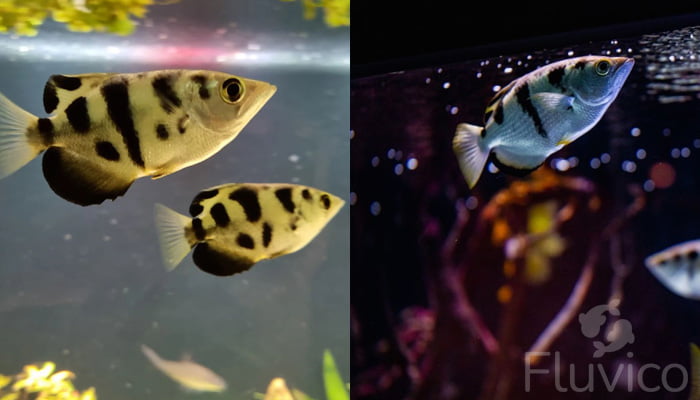
Tank mates
Creating a harmonious community within your aquarium is a balancing act that requires careful selection of species that can live together peacefully. Archer Fish, known for their generally tranquil nature but predatory instincts towards smaller fish, need particular consideration when selecting tank mates. Compatible Tank Mates:
- Other Archer Fish: Provided your tank is spacious enough, Archer Fish can coexist peacefully within a group.
- Scats and Monos: Both these species thrive in brackish waters, just like Archer Fish, making them compatible tank mates.
- Mudskipper Goby and Fiddler Crabs: These species can share a tank with Archer Fish, adding an intriguing mix of inhabitants that can coexist comfortably.
- Larger Tetras and Barbs: These fish species are sufficiently large to avoid being considered prey by the Archer Fish and can thrive under similar water conditions.
Incompatible Tank Mates:
- Small Fish: Any small species, such as Neon Tetras, Guppies, and Rasboras, should be avoided as they could easily become a meal for Archer Fish.
- Slow-Moving or Long-Finned Species: Species like Bettas, Angelfish, or Fancy Goldfish may be stressed by the more active Archer Fish, especially due to their slower pace or attractive long fins.
- Aggressive Species: Highly aggressive or territorial fish, such as certain types of Cichlids, Red Tailed Sharks, or Tiger Barbs, could stress or injure the generally peaceful Archer Fish.
- Non-Brackish Water Species: Fish that are not tolerant of brackish water, such as many freshwater Corydoras or Plecos, are not suitable companions for Archer Fish.
Observing your aquarium and understanding the individual behaviour of your fish is crucial when introducing new tank mates. The aim is to establish a tranquil, well-balanced community where all species can flourish.
Archerfish Breeding
Breeding Archer Fish can be quite a challenging task, even for experienced aquarists, due to their specific environmental needs. However, with proper care and conditions, successful breeding is possible. Here are the steps:
Total Time: Approximately 2-3 months.
1: Prepare a Suitable Environment:
Set up a spacious tank with brackish water conditions as discussed earlier. Archer Fish are large and active, so they need plenty of space to move.
2: Sexing:
Archer Fish are difficult to sex, but females may appear fuller-bodied, especially when carrying eggs.
3: Maintain Optimal Conditions:
Maintain a water temperature of 24-28°C (75-82°F) and a pH between 7.5 and 8.0. The salinity should be slightly higher during the breeding season, closer to the seawater end of the brackish spectrum.
4: Diet:
Feed a varied diet of live and frozen foods to condition the fish for breeding.
5: Spawning:
If the conditions are right, females will lay their eggs on a flat surface, such as the underside of a broad leaf or a flat piece of slate. The males will then fertilize them.
6: Egg Care:
An important step to monitor. After fertilization, both parents will guard the eggs, which should hatch in about a week under ideal conditions. At this stage, it might be advisable to remove the parents to prevent them from eating the fry.
7: Fry Care:
Feed the newly hatched fry with infusoria or newly hatched brine shrimp. After a week or two, they can be gradually introduced to larger foods.
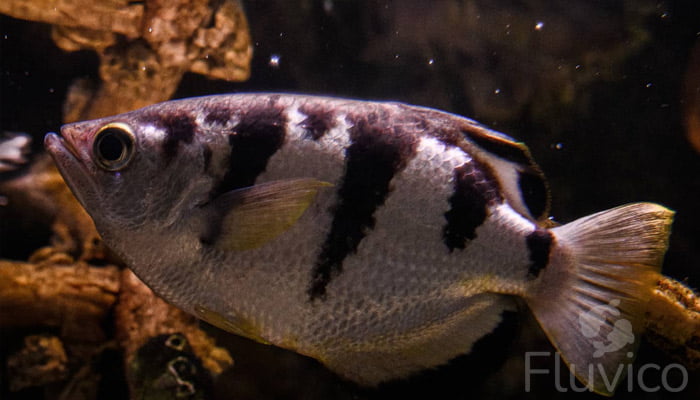
Should you get Archer Fish for your aquarium
Adding Archer Fish to your aquarium can be a fascinating and rewarding experience, thanks to their unique hunting behaviour, attractive appearance, and generally peaceful nature. However, as with any species, there are pros and cons to consider before making the decision. Benefits of Keeping Archer Fish:
- Unique Behaviour: One of the main attractions of the Archer Fish is their unique hunting ability. They spit water jets at terrestrial insects, offering a captivating spectacle rarely seen in aquarium species.
- Attractive Appearance: With their silver body, dark stripes, and upright dorsal fins, Archer Fish are beautiful to look at and can add aesthetic appeal to your tank.
- Relatively Peaceful: Archer Fish are generally peaceful, making them suitable for community tanks with appropriately-sized tank mates.
- Long Lifespan: With proper care, Archer Fish can live for up to 10 years, giving you a long time to enjoy their presence.
Drawbacks of Keeping Archer Fish:
- Large Tank Requirements: Archer Fish can grow quite large, up to 12 inches in length, requiring a spacious tank of at least 150 litres.
- Brackish Water Conditions: Creating and maintaining a brackish water environment can be a challenge, especially for beginners. You’ll need to monitor and adjust the salinity regularly.
- Diet: Archer Fish are carnivores, and their diet includes insects and small fish. Providing a balanced and appropriate diet can require more effort than with other species.
- Potential Predation: Although generally peaceful, Archer Fish can eat smaller tank mates. This needs to be considered when choosing other fish for your aquarium.
In conclusion, Archer Fish are an exciting and attractive addition to any large brackish water aquarium, but they require a certain level of commitment and experience. They’re more suitable for intermediate to advanced aquarists who can meet their specific needs. As always, thorough research and preparation are key to providing a suitable environment for any aquarium species.
FAQ
Is Archer Fish aggressive?
Archer Fish are generally peaceful and social fish. However, they can display semi-aggressive behaviour, especially when kept in cramped conditions or towards smaller fish that they might consider prey.
Can Archer Fish be eaten?
While technically edible, Archer Fish are not commonly consumed due to their small size and bony structure. They are primarily kept for ornamental purposes in home and public aquariums.
Will Archer Fish eat small fish?
Yes, Archer Fish are carnivorous and in the wild, their diet includes small fish. In an aquarium, they might prey on significantly smaller tank mates, so it’s crucial to choose compatible species.
How far can Archer Fish spit water?
Archer Fish are renowned for their unique hunting skill and can accurately spit water jets up to about 2 metres to knock down insects and other prey from overhanging vegetation.
Why is my Archer Fish not eating?
Archer Fish might refuse to eat due to stress, poor water conditions, sudden changes in diet, or illness. Ensure their environment is well-maintained and consult a vet if their eating habits don’t improve.
More Reading

15 Types of Cryptocoryne: Which is Best For Your Aquarium Setup?

16 Awesome Low Light Aquarium Plants (Mosses, Ferns & Stem Plants)


18 Types of Aquarium Moss: Photos, Care, Propagation & Growth Guide
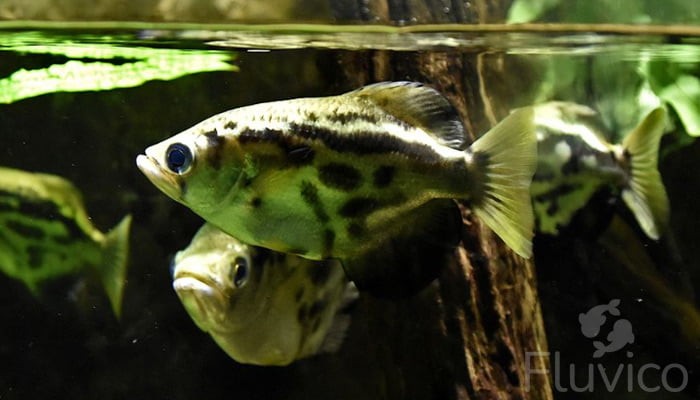
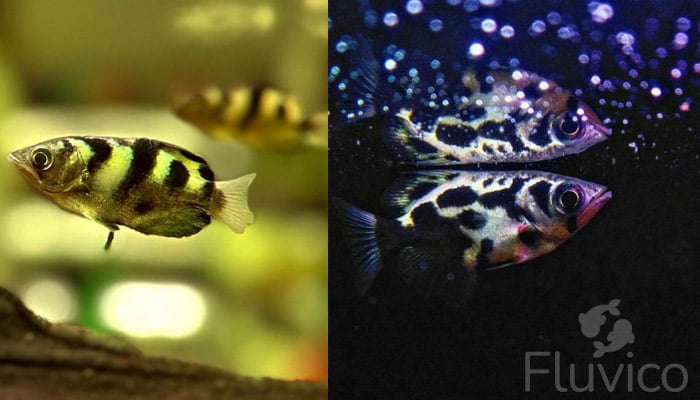

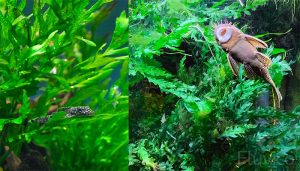


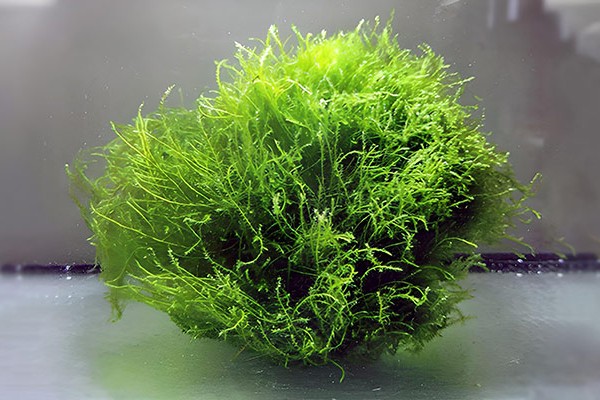
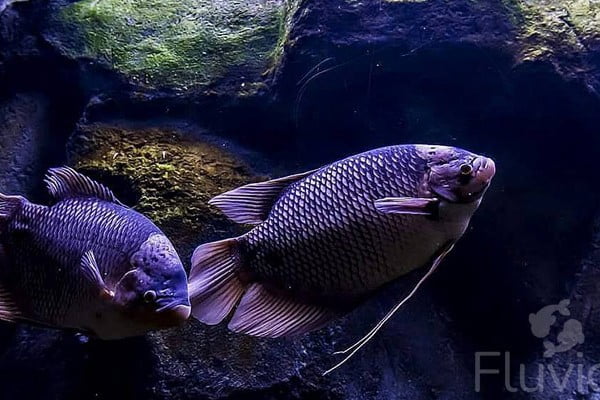
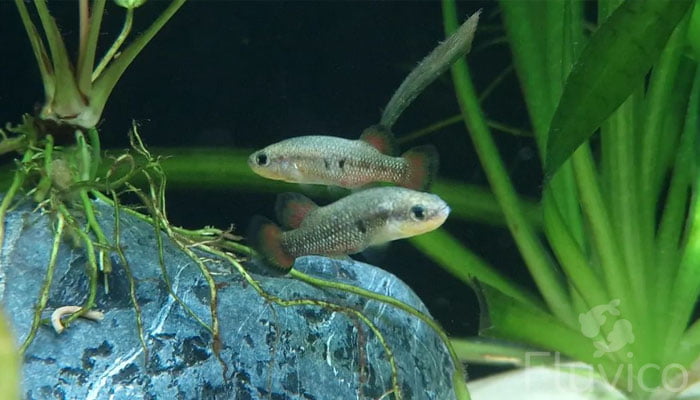
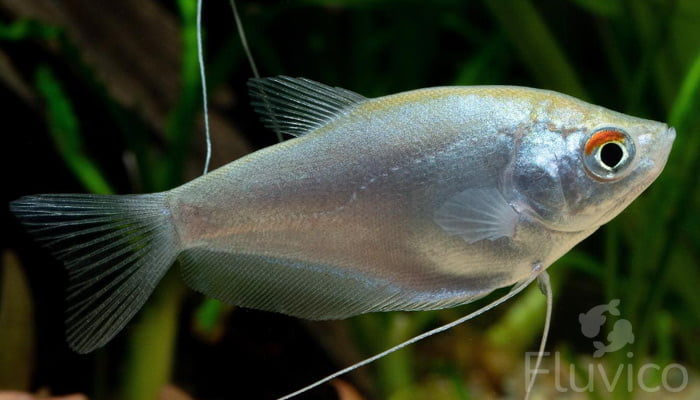
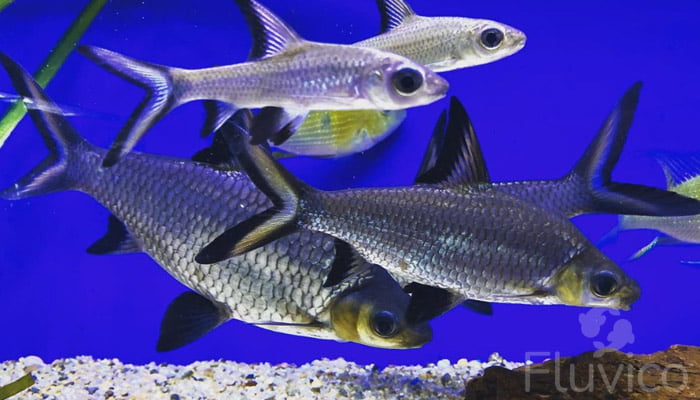
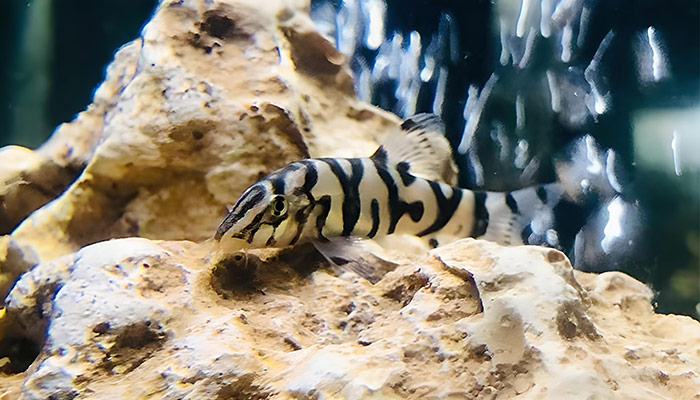
Hope you enjoyed our Archer Fish Care Guide!
If you have any questions? Ask away, we’re here to help!
All the best,
Daniel